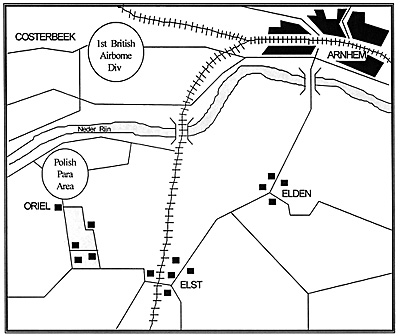The Glider Element
For the glider pilot, getting airborne is a relatively simple thing compared to getting the glider on the ground again. This has specific problems for the era, battle situation and the type of airframe used. The gliders were towed by "tugs" - prop planes. The elegant glider trainer "Hotspur II" was nothing like the "box with wings" for optimum carriage that the gliders became. The flight time from setting free from the tug to landing was expected to average only 1 1/2 to 2 minutes.
The elements needed to be combined for simulation are:
- wind and weather
anti-aircraft fire
crowded skies and landing zones (LZ)
Other "little pleasures" may be added such as cargo shifting (jeeps and trailers) and near misses with other aircraft.
On Landing
Overshoot. Obviously, going too far from the end of your LZ.
Undershoot. Not hitting the front end of the LZ.
Drift or side slip.
Some of this could be intentional as an avoidance procedure, but sometimes not. This can be represented by a D6 throw.
- 1. drift left.
2. drift right.
3&4. indicates a few degrees 'out' only.
5 & 6. Straight on course. Wizard Ride!
Overshoot and undershoot can be represented by a % dice roll. To get on the LZ you have a 75% chance (make things more difficult for yourself if you wish, of course).
If you roll up to 13% that's undershoot. If you roll over 88% that's overshoot.
You can build in your own consequences of both these states by further dice rolls or card cutting. You can write CHANCE CARDS for eventualities to correspond to values or suits in cards. Aces High!
I will now give a check list for landing procedure
1. Wireless to tug. Rehearse details of your given LZ and terrain to pass over.
2. Thank tug and pull lever releasing the tow. [2 ropes attached at the strongest part of the wings.]
3. Gain more altitude to slow glider down.
4. Check position vis a vis the ground and proximity to other gliders in the air. Begin landing.
5. First pilot chooses a clear run in to the LZ. Second pilot checks terrain features simultaneously.
6. Flaps can correct glide path by regaining a little height and gliding in again, but not so efficient as first time around. Manoeuvres can lose fifty meters in height in 10 seconds.
7. Emotional influence, fear? anxiety? Some of the LZ squares might be designated anxiety squares and chance cards drawn on these to reflect extra hazards occasioned by these emotions.
Chance Happenings
1. Pilot shot. Wounded? Killed?
2. Cables severed to aileron.
3. Controls jam. [If rudder or an aileron are hit you can just manage to land OK if you are very clever. Consider a pilot proficiency test before take off. If both rudder and an aileron are hit, you have had it!]
Problems of Altitude Simulation
The best one can do with "back of a postcard" ideas is to have a measure or two to represent height. I have begun arbitrarily at 1000 meters and come down in decrements of 50 meters to BUMP points. If members wish to come in from greater heights, build your own table. I think the best way to get down is an average dice. This gives the possibility of mostly 4s and 3s decrements with an occasional 2 and sudden 5! If you have numbers over near the bump that sends you "up" again until you have the right number. I suppose the longer you are up in the air the greater chance of enemy fire hitting you. You can resolve this on a % or D6 as you wish.
Well there it is for you to play around with. I'm sure it can be improved upon and some of you may be interested enough to do so.

Back to Table of Contents -- Lone Warrior #106
Back to Lone Warrior List of Issues
Back to MagWeb Magazine List
© Copyright 1999 by Solo Wargamers Association.
This article appears in MagWeb (Magazine Web) on the Internet World Wide Web.
Other military history articles and gaming articles are available at http://www.magweb.com
